Before the Coronavirus outbreak, Donald Trump was using a very powerful tool to get what he wanted from Saudi Arabia – Twitter. He would send tweets to express his displeasure over the crude oil prices and gave orders for OPEC to do the necessary. In essence, the U.S. president controls Saudi to fulfil his wishes to make Americans happy.
On April 13, Trump blasted a message, which appeared to be claiming victory as well as self-praising – “Having been involved in the negotiations, to put it mildly, the number that OPEC+ is looking to cut is 20 Million Barrels a day, not the 10 Million that is generally being reported. If anything near this happens, and the World gets back to business from the Covid 19…..”
But about 10 days earlier (April 2), it was Trump himself who tweeted the message about 10 million barrels cut – “Just spoke to my friend MBS (Crown Prince) of Saudi Arabia, who spoke with President Putin of Russia, & I expect & hope that they will be cutting back approximately 10 Million Barrels, and may be substantially more which, if it happens, will be GREAT for the oil & gas industry!”
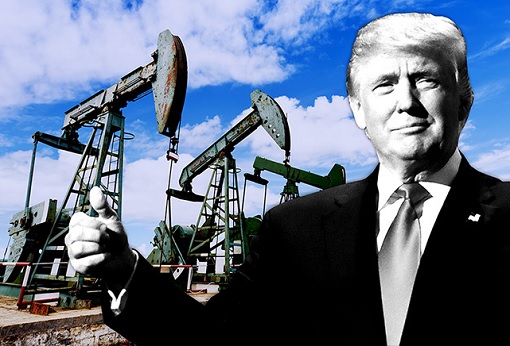
The final deal, announced on April 12, was to cut 9.7 million barrels per day (and not 20 million bragged by Trump). However, the deal was significant because not only it involved Saudi Arabia and Russia, the agreement was also made together with the G-20 countries, including the U.S., in a desperate attempt to bring the oil industry back from the brink of a total collapse.
After the deal, Trump celebrated by calling it a “great deal for all” – “The big Oil Deal with OPEC Plus is done. This will save hundreds of thousands of energy jobs in the United States. I would like to thank and congratulate President Putin of Russia and King Salman of Saudi Arabia. I just spoke to them from the Oval Office. Great deal for all!”
President Trump might have been boastful – or even lied – to both Saudi and Russia when he claimed on April 13 that OPEC+ was looking to cut production by as much as 20-million barrels a day. He reportedly had offered to get U.S. oil producers to cut supply, but refused to guarantee it. The G-20 nations were expected to cut 5-million barrels, but there was no commitment.
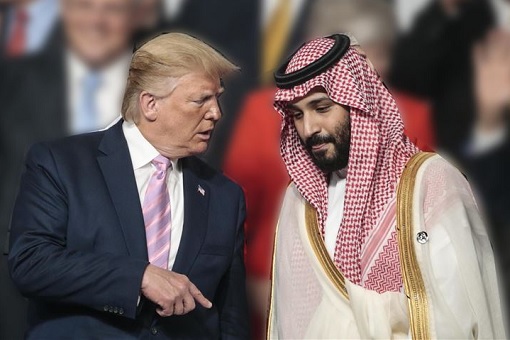
Still, the fact remains that Trump was the broker who made the deal possible. But how did he manage to get both parties, especially Saudi Arabia, to agree to a supply cut? After all, the real bloodbath in the energy market started after Saudi Crown Prince Mohammed bin Salman ordered the kingdom’s oil industry to go all the way out to grab market share from Russia and the U.S.
Apparently, when President Trump tweeted about the 10-million barrels cut on April 2, it was already a done deal. That was because on that very same day, he had threatened the Saudi Crown Prince. During a phone call, Trump told the Saudi’s future king that if OPEC did not cut production, he would not be able to stop the U.S. Congress from passing a law to remove American troops from the kingdom.
According to Reuters, the Saudi Crown Prince was so shocked – and terrified – by Donald Trump’s threat that he ordered his aides out of the room so he could continue the discussion in private. It was an easy diplomatic victory for the Trump administration. The argument from the Washington to Riyadh was – “We are defending your industry while you’re destroying ours.”
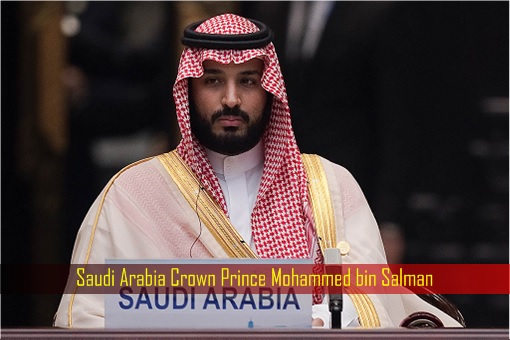
When Trump was asked if he had told the Saudi Crown Prince that the U.S. might pull forces out of Saudi, he said – “I didn’t have to tell him. I thought he and President Putin, Vladimir Putin, were very reasonable. They knew they had a problem, and then this happened. They were having a hard time making a deal. And I met telephonically with him, and we were able to reach a deal.”
But was Trump bluffing when he issued an ultimatum to the Saudi? On March 27, the week before Trump’s phone call with Crown Prince Mohammed, U.S. Republican Senators Kevin Cramer and Dan Sullivan had introduced legislation to remove all U.S. troops, Patriot missiles and THAAD anti-missile defence systems from the kingdom unless Saudi Arabia cuts oil output.
Threatening the defense relationship with Saudi Arabia, which is vulnerable to attack from arch rival Iran without U.S. protection, worked like a charm. Senator Cramer is from North Dakota, which produces 1.4 million barrels of oil per day, second-most among U.S. states behind Texas. Senator Sullivan, on the other hand, is from Alaska, which produces about 480,000 barrels per day.
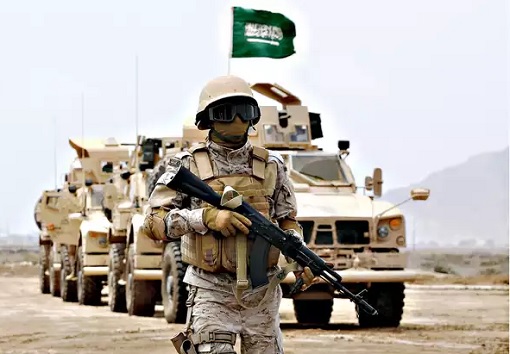
Facing re-election, Donald Trump will most likely honour his threat to pull out American troops to teach the Saudi a lesson, if the crown prince refused to comply. Besides, Saudi Arabia tried to force U.S. shale oil producers out of business in 2014 by flooding the market with cheap oil. But the American companies proved more resilient, and able to produce at lower prices than the Saudis expected.
Facing the challenges of economic slowdown and record unemployment, Trump was annoyed with the Saudi-Russia price war, which has affected the energy jobs in the U.S. The price war started after Russia rejected a Saudi’s new plan to extend existing production cuts of 2.1-million barrels a day throughout the entire 2020 as well as to cut additional 1.5-million barrels.
Russian Energy Minister Alexander Novak declared that beginning April 1 – everyone can pump as much oil as they like. Saudi retaliated and announced massive discounts for April, slashing as much as US$6 to US$7 per barrel for Chinese customers. To make matters worse, Saudi also planned to raise its daily crude output by as much as 2-million barrels per day into an already oversupplied global market.
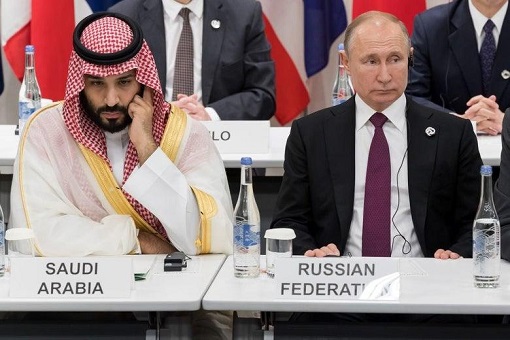
Russian President Vladimir Putin had given up playing the silly game of continually supporting the crude oil price and in the process has only benefited the U.S. shale oil sector. Since 2016, OPEC and non-OPEC partners have been cutting their production to the tune of 2.1-million barrels per day to prop up the oil prices. Yet, the result was not outstanding.
The United States and Saudi Arabia have a longstanding military alliance. The strategic partnership dates back to 1945, when President Franklin D. Roosevelt met with Saudi King Abdul Aziz Ibn Saud on the USS Quincy and reached a deal – U.S. military protection in exchange for access to Saudi oil reserves. There are 2,500 U.S. troops stationed in the kingdom.
However, it was not free engaging the American soldiers. Last December, the Saudi paid US$500 million to begin to cover the cost of US troops operating in the country to deter what appeared to be increasing threat from Iran. Last year, Saudi’s vulnerabilities were exposed when 18 drones and three missiles believed to be originated from Iran attacked key Saudi oil facilities.
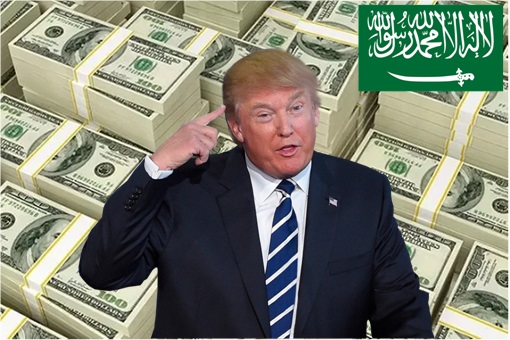
The royal house of Saudi Arabia clearly cannot afford to lose the U.S. military protection, which led to the crown prince kowtow and obediently returned to talk with Russia. Still, in order not to lose face, Riyadh took credit for the production cut deal – claiming that the Crown Prince Mohammed bin Salman had been “instrumental in formulating this deal.”
Other Articles That May Interest You …
- Kaboom! Biggest 1-Day Drop In History – Oil Is Now Below $10, And It Could Stay There For Some Time
- IMF – The “Great Lockdown” Is Set To Triggers The World’s Worst Recession Since The 1929 Great Depression
- Kaboom! – Oil Plunges Below $28, Oil-Reliant Countries Are Set To Lose Revenue By Up To 85%
- Get Ready For A Brutal Recession – Trump’s Speech Fails To Inspire As 150 Million Americans Could Get Infected
- Get Ready For $20 Oil – All Eyes On “Russia vs Saudi” After 30% Oil Crash Sparked By Price War
- Get Ready For $30 – Here’s Why Russia Prefers A Meltdown Of Oil Price Than Another Supply Cut Proposed By Saudi
- Forget OPEC – These 3 Powerful Men Will Determine & Control The World Oil Prices
- Here’s How Oil Could Crash To $10 – In 6 To 8 Years
- Meet United States – The World’s Latest Oil Exporter – After 40 Years
- Here’s Why Oil Above $100 Will Never Happen Again, Ever, Forever!!

|
|
May 2nd, 2020 by financetwitter
|


|

|

|

|

|

|




























Shows you kafir Trump is mightier than those witless Saudi Wahahabis.
Not just Iran would be a threat, the Shias in Yemen could conquer Saudi Arabia overnight if the kafir military of AmeriKKKa pulls out.
Saudi Arabia depends on Wahahabism, a fake cult, and Sunni mercenaries from elsewhere to keep it alive, but that hasn’t done the munafiq kingdom any good.
Even sucking up the Israelis hasn’t done the dying dynasty any good.
Being jolly with ISIS-styled head-chopping has given the patch of sand a bad image among the civilised worldwide.
Being jolly and creative with the bone-saw hasn’t helped either.
We have now to wait for our mullah Hardly Awank to save the Saudis.
Unless, of course, the desperate Wahahabis have to give their demanding women so many anti-Wahahabi concessions that the kingdom collapses first.